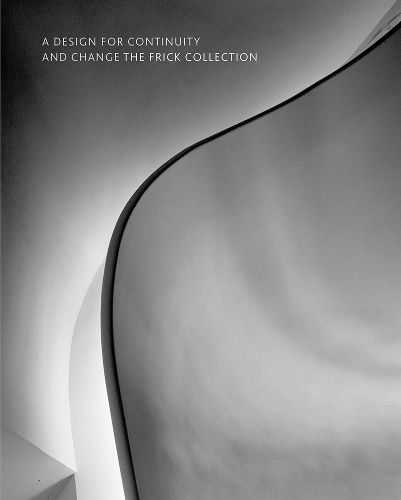Readings Newsletter
Become a Readings Member to make your shopping experience even easier.
Sign in or sign up for free!
You’re not far away from qualifying for FREE standard shipping within Australia
You’ve qualified for FREE standard shipping within Australia
The cart is loading…






Published on the occasion of the 2025 grand reopening of The Frick Collection following its renovation, this book looks at the project from inception to completion, and at the architectural history of one New York's most beloved art institutions.
Published on the occasion of the 2025 reopening of The Frick Collection following its renovation. Seamlessly interweaving the new with the historic, the renovation by Selldorf Architects preserves the institution's Gilded Age grandeur and sense of tranquillity while making more of the museum accessible and adding important new amenities.
A museum of memorable rooms and superb Old Master holdings, The Frick Collection, the former home of industrialist Henry Clay Frick, is one of New York City's most beloved art institutions. Designed by Thomas Hastings of the New York firm of Carrere and Hastings, the original Fifth Avenue mansion was completed in 1914 and served the Frick family until 1931. With John Russell Pope's expansion of the mansion in 1935, which included the addition of a library (today's esteemed Frick Art Research Library), the residence was converted into a public museum.
The goal of the renovation was to honor the architectural legacy and unique contemplative atmosphere of the Frick while adding new space and critical infrastructure updates. Visitors will enjoy the enhanced functionality of the institution, and its improved climate controls will ensure the preservation of the collection and the house for generations to come. As Barry Bergdoll writes, "The restored and expanded Frick Collection answers the demands of a twenty-first-century museum in ways at once pragmatic, ingenious, and so resolved that we almost forget how difficult Selldorf's assignment was. Her skillful design solves local problems and accommodates new functions, even as it masters the tension at the heart of the challenge between transformation and the desire to appear unchanged."
Published by Paul Holberton Publishing
$9.00 standard shipping within Australia
FREE standard shipping within Australia for orders over $100.00
Express & International shipping calculated at checkout
Published on the occasion of the 2025 grand reopening of The Frick Collection following its renovation, this book looks at the project from inception to completion, and at the architectural history of one New York's most beloved art institutions.
Published on the occasion of the 2025 reopening of The Frick Collection following its renovation. Seamlessly interweaving the new with the historic, the renovation by Selldorf Architects preserves the institution's Gilded Age grandeur and sense of tranquillity while making more of the museum accessible and adding important new amenities.
A museum of memorable rooms and superb Old Master holdings, The Frick Collection, the former home of industrialist Henry Clay Frick, is one of New York City's most beloved art institutions. Designed by Thomas Hastings of the New York firm of Carrere and Hastings, the original Fifth Avenue mansion was completed in 1914 and served the Frick family until 1931. With John Russell Pope's expansion of the mansion in 1935, which included the addition of a library (today's esteemed Frick Art Research Library), the residence was converted into a public museum.
The goal of the renovation was to honor the architectural legacy and unique contemplative atmosphere of the Frick while adding new space and critical infrastructure updates. Visitors will enjoy the enhanced functionality of the institution, and its improved climate controls will ensure the preservation of the collection and the house for generations to come. As Barry Bergdoll writes, "The restored and expanded Frick Collection answers the demands of a twenty-first-century museum in ways at once pragmatic, ingenious, and so resolved that we almost forget how difficult Selldorf's assignment was. Her skillful design solves local problems and accommodates new functions, even as it masters the tension at the heart of the challenge between transformation and the desire to appear unchanged."
Published by Paul Holberton Publishing